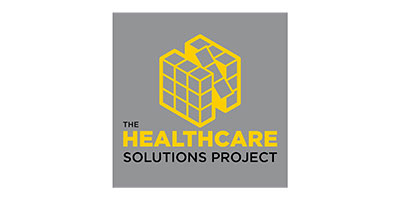
Addressing the Emergent Issue of Long COVID
Although COVID-19 hospitalizations and death rates have dominated the media, another challenge has quietly emerged during the pandemic. Some COVID patients are reporting a wide variety of debilitating symptoms, often lasting months after being diagnosed. [read more...]
Although COVID-19 hospitalizations and death rates have dominated the media, another challenge has quietly emerged during the pandemic. Some COVID patients are reporting a wide variety of debilitating symptoms, often lasting months after being diagnosed. Commonly referred to as long COVID, scientists are just beginning to understand the long-term effects of this novel virus.
Like any chronic disease, addressing long COVID will require an accurate diagnosis, early intervention, appropriate treatment, and support for patients potentially suffering from this new illness. This approach gives healthcare decision-makers the best model for controlling disease progression and preventing adverse health events, ultimately keeping costs in check and improving outcomes.
To carry this out, accurate predictive insights are essential. Addressing long COVID not only requires a better understanding of who’s at risk, but also a way to monitor patients trending toward a potentially adverse health issue.
Understanding Long COVID
Scientists and healthcare professionals are still trying to untangle the complexity of COVID-19, but there is no debate about the existence of long-term effects for some patients. The Centers for Disease Control & Prevention (CDC) notes, “While most persons with COVID-19 recover and return to normal health, some patients can have symptoms that can last for weeks or even months after recovery from acute illness. Even people who are not hospitalized and who have a mild illness can experience persistent or late symptoms.”
Why is this happening? Even though COVID-19 is a respiratory infection, it impacts multiple systems in the body. The most common symptoms of long COVID include fatigue, shortness of breath, cough, joint pain, and chest pain. However, patients may also exhibit brain fog, depression, muscle pain, headache, intermittent fever, and heart palpitations. Even more concerning, doctors say the novel coronavirus can attach to human cells in many parts of the body and penetrate many major organs, including the heart, kidneys, brain, and blood vessels.
Figuring out the mechanisms that cause these disparate issues is critical to understanding and treating long-term symptoms. There are numerous theories about what causes long COVID symptoms, and why patients are affected in different ways.
- Some clinicians believe the body’s immune system is overreacting to the virus, which results in immune cells attacking healthy tissue throughout the body. However, not all patients show signs of hyperinflammation, and some worry that using drugs to dampen the immune response will allow the virus to take hold again.
- Another theory focuses on a compound called bradykinin, which the body produces to regulate blood pressure. It appears the coronavirus causes the overproduction of this compound, causing blood vessels to leak. Scientists believe this might be the key to why patients experience vascular changes, lung damage, and even neurological symptoms.
- The COVID Symptom Study suggests there may be six main types of illness, based on six different clusters of symptoms, which may correspond to differences in affected organs. These findings could have major implications for the clinical management of COVID-19, allowing doctors to better predict who is most at risk for infection, likely to need hospital care, and/or develop long COVID.
Assessing the Growth of Long COVID
While it’s not yet clear how many people will develop long COVID, there are a few sources that provide insights – and all signs point to a growing number of long COVID patients. A study from the European Respiratory Society surveyed 112 hospitalized and 2,001 non-hospitalized patients in the Netherlands. The authors noted that “multiple symptoms are present about three months after symptoms onset.” Remarkably, they found that only 0.7 percent of people were symptom-free 79 days after their infection.
But what factors influence who will develop long COVID? Although there are no definitive answers, an early study provides some insights. Researchers at Kings College London analyzed data from the COVID Symptom Study app and noted these findings:
- Long COVID is more likely to affect older people.
- Weight also plays a role, with overweight people more likely to report long-term symptoms.
- Women were more likely to suffer from long COVID than men.
- People reporting a wide range of initial symptoms were more likely to develop long-term symptoms, as were people with asthma.
Recognizing the need for more long-term data, numerous studies are underway. A promising example is one coordinated by researchers at Columbia University Vagelos College of Physicians and Surgeons. They’re managing the NIH-funded study called the Collaborative Cohort of Cohorts for COVID-19 Research (C4R) Study. Over 50,000 participants in C4R are currently enrolled in 14 long-term cohort studies conducted at 37 academic medical centers across the country.
In addition to its size, this study is notable because the participants reflect the age, racial/ethnic, socioeconomic, and geographic diversity of the United States. Factoring in the conditions where people live, learn, work, and play can affect a wide range of health risks and outcomes. As data becomes available, layering in the social determinants of health (SDOH) will enable a greater level of accuracy when predicting who’s most at risk.
Decode Health’s own observations bear this out. In a recent example, our data showed that not only were the SDOH a critical factor in determining populations at risk for potential COVID-19 infection growth, we also found that certain SDOH factors correlate with poor disease outcomes and even death. Interestingly, we found that certain SDOH factors that strongly influence COVID outcomes can change over time. For example, if a community’s housing instability was a contributing factor in the early days of COVID-19 infection, local and state eviction freezes may blunt the effect over time. This reinforces the need for ongoing population monitoring and recognition of the evolving patterns of risk factors that lead to case growth or poor COVID outcomes including hospitalization or death.
Managing Long COVID
Given what we know so far about long COVID, it’s clear the best outcomes will require a multi-disciplinary approach that’s data-driven and patient-focused.
For example, even though long COVID is a recognized condition, many clinicians still tend to believe that there are principal outcomes for patients infected with SARS-CoV-2: people either get very sick and become hospitalized, or they have a mild form and get better quickly. Patients are finding they’re not taken seriously when they bring up their long-term symptoms, often turning to online support groups instead. While reassuring, this could lead to inappropriate self-diagnosis or treatment.
We can also expect that the symptoms of long COVID may exacerbate a patient’s existing chronic conditions. With so many systems of the body affected, this adds another level of complexity for both the physician tasked with establishing a long COVID diagnosis and the patient trying to manage their treatment plan.
While there’s no single answer to addressing long COVID, a critical element of the solution is being one step ahead of COVID-19 infection risk. When healthcare providers can identify individuals with a higher risk of developing COVID-19 or populations trending toward higher levels of COVID-19 spread, they can be proactive about mitigation efforts and testing.
Decode Health’s Answer to COVID-19 Risk
Decode Health’s data scientists use AI and machine learning to produce early, actionable insights for care teams to proactively manage disease. Before the pandemic, we focused on costly, burdensome chronic diseases ranging from autoimmune conditions such as inflammatory bowel disease or multiple sclerosis to highly prevalent chronic diseases like COPD or diabetes. Our platform accuracy is consistently high (90%+) for predicting disease outcomes, including adverse clinical events, in more than a dozen chronic disease areas. Decode Health’s underlying framework is extensible to virtually any chronic disease.
With the emergence of COVID-19, we recognized a clear need to leverage our platform for this novel, highly infectious illness. Our team quickly enhanced our chronic disease framework to target acute infection risk for distinct states and geographic regions in the United States. Over the last six months, we consistently predicted counties at greatest risk for COVID case growth. In our home state of Tennessee, we predicted which counties would be in the top third of cases statewide with 95% average accuracy, week to week. More importantly, we documented and analyzed the changing drivers of that risk, so community leaders could make informed public health decisions.
Recognizing that acute COVID can turn into long COVID, Decode Health’s expertise is needed to maximize the potential for proactive interventions. How does this work in practice? We flag patients trending toward a diagnosis, like long COVID, and those potentially at risk for a costly, adverse event – especially those with pre-existing or yet to be diagnosed chronic conditions. Our ability to identify and predict evolving risk patterns enables targeted education, intervention, and testing. To provide additional context for decision making, we enrich our models with geographically targeted SDOH data. This information helps stakeholders understand the social, physical, and environmental factors that contribute to distinct COVID-19 outcomes. Dramatic differences can exist within multiple counties in the same state or in different neighborhoods of the same city. For example, two communities may not provide the same level of access to transportation or healthy foods. Education barriers may also exist requiring translation of community health announcements and testing information into languages other than English. Understanding and addressing these disease risk factors can promote resilience in the current pandemic and lay significant groundwork for US communities to build resilience to future viral respiratory infections as well.
Leveraging the Decode Health Platform to Address COVID-19 and Other Disease Risk
As COVID-19 continues to influence daily life, the importance of monitoring at-risk population grows. Decode Health is well-positioned to help organizations manage risks related to COVID-19 case growth and long COVID, as well as other chronic conditions in their populations. Decode Health’s solution is easy to implement and flexible. We can translate your health data into early, accurate insights so you can develop targeted, appropriate interventions.


















